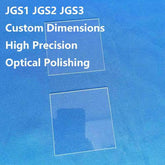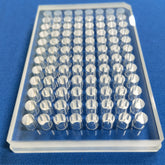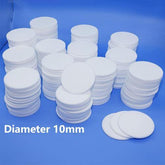Application of sapphire glass in protective windows
Sapphire glass generally refers to synthetic sapphire, which is known for its superior comprehensive properties, and is frequently used to substitute for other optical materials in the fabrication of optical components and infrared optical windows. Additionally, it can be utilized as an oxide substrate material. The primary constituent of sapphire is alumina, in conjunction with tungsten titanium alloy and advanced ceramic materials, all of which exhibit exceptional abrasion resistance. Although these materials are highly resistant to abrasion, they prove unable to withstand strong impact. Meanwhile, some materials which possess the same or higher hardness than sapphire, may also be capable of causing damage to sapphire.

Sapphire boasts a wide range of applications, including use as a practical substrate material for semiconductor diodes, as well as ideal materials for high-power laser windows and laser matrix. Presently, the utilization of the temperature gradient technique and the bubble method facilitates the production of sapphire in various gradations, including 80kg, 120kg, 150kg, and others. In the process of sapphire manufacturing, internal stress will inevitably occur. Especially for sapphire crystal rods, additional machining stresses are introduced after the rod digging process. In the process of cutting a stressed sapphire ingot, it is possible to encounter large arc, and low cutting precision. These factors may lead to an increased level of stress at the cutting surface of the wafer, subsequently leading to enhanced warping and bowing of the wafer following the cutting process.

Sapphire glass is predominantly used for the protective windows of the sensor and detector, and its chemical composition is Al2O3, which is a colourless, transparent crystal material. Sapphire is classified as hexagonal crystal system in crystallography and its crystal space group is R3C, where the oxygen and aluminium atoms are bonded together via covalent bonds. In the crystal cell structure, O2- is hexagonally packed in a highly compact manner, with the accumulation layer being positioned perpendicularly to the cubic axis. Sapphire is renowned for its distinctive properties, which include hardness, scratch resistance, especially high temperature resistance, corrosion resistance, and acid and alkali resistance. Its stability is notable, while its transparency to infrared and other characteristics is also a salient feature. Therefore, it can be applied across a number of fields, including the fabrication of photometers and spectrometers in industrial and scientific research, as well as being utilized in reactors and other associated products.






